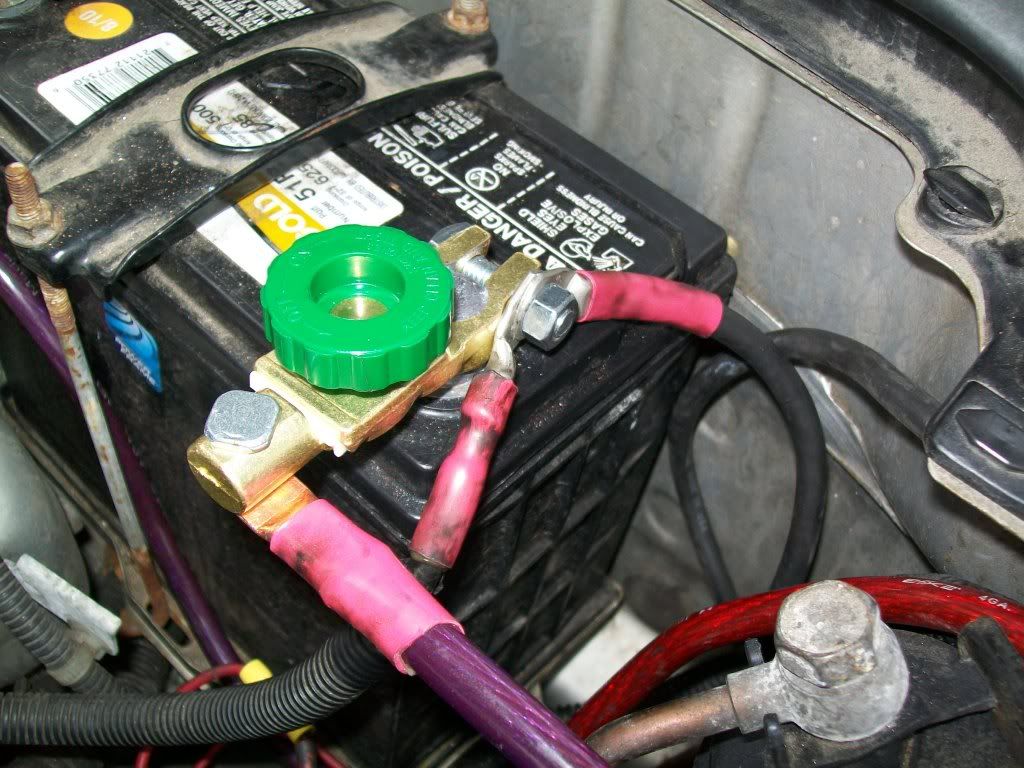Hi Brucepick,
I'm looking again at how to disable, or switch on and off, an alternator, and I saw your post (here quoted) from 2012.
My current alternator just happened to self-excite at 4000rpm, so with the exciter wire disconnected the alt would not operate during normal driving - especially low-rev eco-driving! - but could be brought into action with a little blip of the throttle if voltage ever got too low. So I never needed a switch.
However, that alternator just recently decided to die, and when I replace it, the replacement may self-excite at 1000rpm, or not at all, and there's no practical way of predicting that. No one knows, including the people who sell alternators, how an individual specimen, or even a particular model, will behave in that regard, as it's outside the normal design spec. (I know - I tried last time!)
So, I just saw your old post from 2012 here and wondered if yours might be a more foolpoof method. It looks a good, simple method, and would certainly stop charging voltage getting into the car, but how safe is it? Can the switch be used while the engine is running? This is an issue because the only time I'd want to switch the alt ON is when the voltage has got so low that I may not be able to start the engine again. (Diesel.)
Did you measure what voltage the alternator was outputting with that switch in the OFF position? The voltage on the alternator side of that switch?
I would never need to DISconnect the switch with the engine running.
I've been driving around with a dead alternator (just disconnected at the exciter wire) for a month or two now, because I have the luxury of an auxiliary battery and a 25A dc/dc converter supplying 14.0v, and that is well sufficient for daily commuting and work, etc. but I do get nervous on longer journeys. I must get the alternator replaced before winter.
So, can you advise at all?
Quote:
Originally Posted by brucepick

Yeah, the "exciter" wire is just that - there to "excite" the alternator. Without it, many alternators will start running once you reach a certain rpm or after a minute or two.
Anyway, in my Civic, I used a switch at the alternator's output wire. I used to drive Volvo 240's; I think they had the alt output cable routed to the starter's positive terminal, from where another cable goes to the battery positive. So that works as if it were one wire from alt to battery, just with a "tap" at the starter.
With this switch you can't turn the alt on and off from driver's seat while driving. It goes under the hood. But it's rugged and does the job at what I thought reasonable cost.
So, build it this way - - -
Disconnect the battery ground for your protection. I found out the hard way, you can't work on these heavy positive cables without creating a short with a loud POP.
Disconnect the existing heavy positive cable at the alternator. Run a new 4 gauge cable from the alternator towards the battery positive terminal. 6 ga (smaller) would likely do but most people will tell you use 4 ga. It's a bit of a run to the battery so heavier is better.

Get a battery disconnect switch like pic above, which you will mount on the battery positive terminal. They're made for the neg terminal which is a slightly smaller diam post. So you'll need to file out the inner diameter some for it to fit your fatter positive post. About $6-10 in stores.

These have a screw knob that you only need to unscrew a quarter turn for the switch to be "off". Tighten it and it's "on" again. Get a small nylon bushing or spacer from hardware store, put it under the screw knob for driving with alt cut out. That way your screw knob is secure and the switch won't come apart from vibration. Remove spacer and tighten knob to activate the alt. Remember it was made as a DISCONNECT so they assume you're not driving when it's disconnected. You WILL be driving with it disconnected. So I say, tighten the screw for security, and put a nylon bushing under screw knob so it's "off" when tightened.
See pic (my Civic). I have two cables connected to the clamp-tightening screw, and the alt cable connected to the switched screw terminal.
All the regular stuff that's already hooked to your battery goes to the main bolt that tightens the switch's clamp. Your new alternator wire goes to the screw location on the other end of the switch. When switch is off, alt is disabled. When knob is tightened (without your nylon spacer in between) the alt is in the circuit.
I think you wrote about using a 2nd battery; I didn't discuss that here. Here I only talked about how to disable the alt with that switch. |